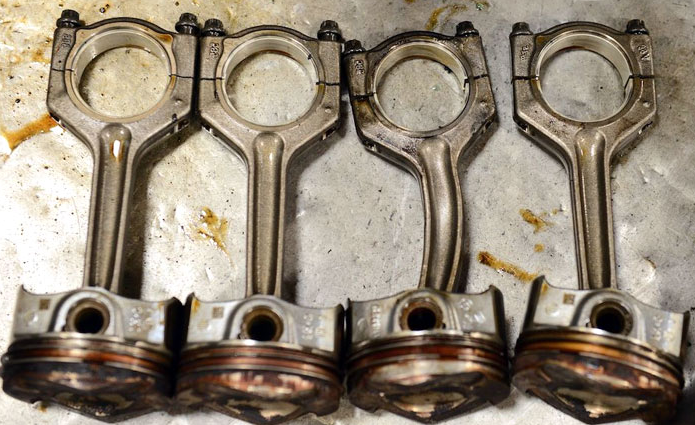The connecting rod is a vital component in an internal combustion engine, responsible for transmitting the reciprocating motion of the piston to the crankshaft. It endures significant stress and strain during engine operation, making it susceptible to wear and potential failure. Recognizing the signs of a faulty connecting rod is crucial to prevent further damage and avoid costly repairs. In this article, we will explore several indicators that can help you determine if your connecting rod is bad.
- Unusual Engine Noises: A primary indication of a bad connecting rod is the presence of unusual engine noises. Listen carefully for knocking, tapping, or clanking sounds, particularly during acceleration or when the engine is under load. These noises may be caused by excessive play or a loose connection between the connecting rod and the crankshaft. Ignoring such sounds can lead to catastrophic engine failure.
- Vibrations and Engine Performance Issues: A faulty connecting rod can result in increased vibrations felt throughout the vehicle, especially at high engine speeds. These vibrations may be accompanied by a loss of engine power, reduced acceleration, or hesitation during acceleration. If you notice a significant decrease in performance accompanied by unusual vibrations, it is likely that the connecting rod is compromised.
- Oil Consumption and Contamination: A bad connecting rod can disrupt the engine's lubrication system, leading to increased oil consumption and contamination. Monitor your engine oil levels regularly. If you find that your oil levels are consistently low or the oil appears dark and gritty, it could be an indication of a damaged connecting rod. Excessive friction caused by a worn connecting rod can cause metal shavings to contaminate the oil, further accelerating engine wear.

- Overheating: A malfunctioning connecting rod can hinder proper cooling of the engine, resulting in overheating.FEDA. If your engine temperature gauge consistently shows higher-than-normal readings, or if you notice coolant leaks or steam coming from the engine bay, it may be due to a compromised connecting rod. Overheating can cause severe damage to other engine components, necessitating immediate attention.
- Cylinder Misfires: A damaged connecting rod can lead to a cylinder misfire, where one or more cylinders fail to ignite the fuel-air mixture properly. Symptoms of a misfire include rough idling, poor fuel efficiency, reduced power, and a noticeable decrease in engine smoothness. If you experience these issues, have your engine diagnosed by a professional mechanic to determine if a faulty connecting rod is the cause.
- Visible Physical Damage: In some cases, a visual inspection may reveal obvious signs of connecting rod damage. If you are knowledgeable about engine components, you can inspect the connecting rods for visible cracks, bends, or signs of excessive wear. Keep in mind that this method requires expertise, and if you are uncertain, it is best to consult a qualified mechanic.
Conclusion: The connecting rod plays a critical role in the smooth operation of an internal combustion engine. Being aware of the signs and symptoms of a faulty connecting rod can help you detect potential issues early and prevent severe engine damage. If you notice any of the indicators mentioned, it is advisable to seek professional assistance promptly. Regular engine maintenance and inspections can also contribute to the early detection of connecting rod problems, ensuring the longevity and performance of your vehicle.
